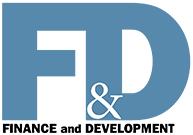Book Reviews
Finance & Development, September 2014, Vol. 51, No. 3
The Saga of Bretton Woods
Ed Conway

The Summit: The Biggest Battle of the Second World War—Fought Behind Closed Doors
Little, Brown, London, 2014, 863 pp., $29.95 (cloth).
It makes for a tremendous story. A colorful cast of characters at an isolated hotel in the mountains of New Hampshire. Glorious summer weather, abundance such as many of those present had not seen in almost five years of war, and plenty of alcohol. In the two leading roles, Britain’s John Maynard Keynes—brilliant, eccentric, ill, with a weak hand to play, and attended by his wife, the unconventional prima ballerina Lydia Lopokova—and Harry Dexter White of the U.S. Treasury—determined, self made, energetic, and with a backstory of contacts with Soviet intelligence. The challenge was to reach an agreement on an international monetary system that would eliminate the scourges of instability and mass unemployment. Despite the complexity of the subject matter and the chaos of the drafting sessions, an agreement was reached that remains a byword for international cooperation. If Keynes was disappointed in the result, and White came to doubt some of its main features, it nevertheless created and funded two institutions that have embedded themselves at the center of international economic cooperation for 70 years.
A great story, which Ed Conway, economics editor of Sky News, tells with verve. He draws on the memoirs of the participants and extracts fascinating nuggets from archives across the world. If the focus is on the human drama of the conference, the reader also gets a prehistory of the issues at stake and what they meant to the participants and an account of how their agreement fared subsequently.
Conway spotlights the pressures on the negotiators from domestic politicians with an arsenal of axes to grind and an imperfect grasp of the issues involved, as well as from a financial sector jealous to preserve its many ways of making money. The subsequent ratification of the two agreements creating the IMF and the World Bank looks even more miraculous given the fate of others, such as the International Trade Organization.
The main issues of international economic and monetary cooperation discussed at the conference remain at the forefront of today’s policymaking. Should both surplus and deficit countries share the burden of adjustment? What is the best way to ensure stable exchange rates without making the system too rigid and imposing unendurable burdens of adjustment? How much autonomy should domestic economic policy have and how free should capital movement be? How can a country’s unsustainably large debt be managed? Conway’s lively account of how participants at the conference in that Bretton Woods, New Hampshire, hotel dealt with these matters offers sharp insight into the issues of the current round of crises.
The IMF mandate in the Articles of Agreement negotiated at Bretton Woods is expressed in complicated and obscure language. This is hardly surprising, given the confusion of the negotiations. Keynes complained that the U.S. draft of the agreement seemed to be written in Cherokee, but White and his delegation strove to keep it that way. They had more experience in a legal tradition whose basic texts are construed to make them apply in circumstances far from the minds of the drafters. But the result gave the IMF the flexibility it needed to adapt and respond to the changing needs of the world economy.
The rules of the Bretton Woods system were designed to be vague. The more astute drafters recognized that rules are likely to stick only if other countries are prepared to sanction the violators—rarely the case when the violator is a strong surplus country. The agreement might have broken down at the first challenge had the rules been more specific. As it was, enforcement was not strong, and ways emerged to circumvent inconvenient rules.
The monetary system that was designed at Bretton Woods did not even start to operate until the late 1950s, and was largely dismantled in 1971–73. But it was one of the more prosperous and stable periods in international economic history. It is hard to know how much credit to assign to the specific rules agreed at Bretton Woods and how much to other factors, such as postwar recovery or the demand impulses from the United States and its willingness to supply the needed liquidity. While the system broke down under the strains of the U.S. current account deficit and the mushrooming of financial markets, would-be reformers of the international monetary system continue to call for a new Bretton Woods.
So what was the main achievement of those weeks in the mountains of New Hampshire if the rules for an international monetary system were so short lived?
It was the creation and funding of two institutions with mandates to promote international financial cooperation and economic development. Their effectiveness in promoting the common purpose has vindicated the vision and determination Keynes, White, and their colleagues showed at Bretton Woods 70 years ago.
Mark Allen
Former Senior Regional Resident Representative for
Central and Eastern Europe
Former Director of
the IMF’s Policy Development and Review Department


